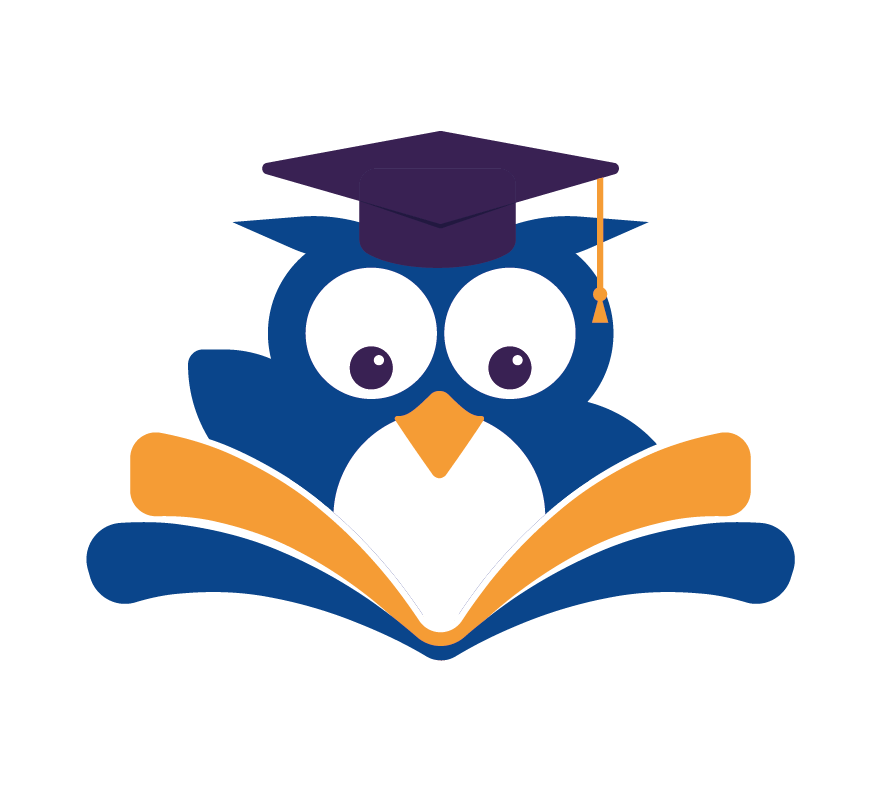Are you tired of spending hours trying to learn new skills? Rapid learning is a game-changer, and we’re here to show you how to achieve it!
Imagine being able to pick up any new skill in a fraction of the time it normally takes. With our Rapid Learning Blueprint, you can make that a reality. This isn’t about cramming information; it’s about accelerated skill acquisition that sticks.
We’ll guide you through effective strategies and techniques that make learning not just faster, but also more enjoyable. Get ready to master new skills quickly and unlock your full potential!
Key Takeaways
- Understand the principles behind rapid learning
- Discover how to create an effective learning plan
- Learn strategies to boost your learning speed
- Find out how to stay motivated throughout your learning journey
- Apply techniques to retain information better
The Science Behind Rapid Skill Acquisition
Unlocking rapid skill acquisition starts with understanding how our brains adapt. Our brains are wired to learn. By using this natural ability, we can accelerate our skill acquisition a lot.
How Your Brain Forms New Neural Connections
When we learn something new, our brain makes new neural connections. This is key to getting new skills. By practicing often and pushing ourselves, we make these connections stronger. This makes it easier to remember and use what we’ve learned.
Leveraging Neuroplasticity for Faster Learning
Neuroplasticity lets our brain change and adapt. By using neuroplasticity, we can learn faster. This means challenging our brains with new stuff and experiences. It helps build new neural pathways.
| Technique | Description | Benefit |
|---|---|---|
| Spaced Repetition | Review material at increasingly longer intervals | Improved long-term retention |
| Active Recall | Actively recall information from memory | Strengthens neural connections |
| Interleaving | Switch between different types of material | Enhances deep understanding and flexibility |
Debunking Learning Style Myths: What Actually Works
There’s a myth that we all have specific learning styles. But research shows mixing up learning strategies works better. Using efficient learning strategies like active recall and spaced repetition helps a lot.
Studies say learning on your own needs four key steps. These include making a vision statement, diving deep into topics, thinking critically about learning methods, and investing in active learning. By following these steps and understanding the science of rapid skill acquisition, we can improve our learning a lot.
Preparing Your Mind and Environment for Accelerated Learning
Learning fast starts with a good learning space and mindset. To learn quickly, make your study area great and think positively.
Creating Your Optimal Learning Space
Your study area is key for learning well. Think about both the physical and digital parts.
Physical Environment Optimization
Keep your study area clean, bright, and comfy. A messy space messes with your mind. This small change can really help you focus.
Organize your digital tools to avoid distractions. Use apps to block sites you shouldn’t visit and make learning smoother.
Cultivating a Growth Mindset for Learning Acceleration
Believe you can learn new things with effort. Think you can grow your skills with hard work. As Carol S. Dweck says,
“The view you adopt for yourself profoundly affects the way you lead your life.”
This mindset keeps you motivated and strong.
Optimizing Sleep, Nutrition, and Exercise for Brain Performance
A healthy body means a sharp mind. Get enough sleep, eat well, and exercise to boost your brain and learning.
Master Anything Faster: Your Blueprint for Rapid Learning
Learning quickly is possible with the right plan. To learn faster, use methods that make learning easier.
Applying the 80/20 Principle to Any Skill
The 80/20 principle says 80% of results come from 20% of efforts. In learning, it means focusing on the most important parts of a skill. This way, you can learn faster.
Deconstructing Complex Skills into Manageable Components
Breaking down complex skills into smaller parts makes them easier. This method, called deconstruction, helps you learn one part at a time. It makes learning less scary.
Creating Your Personal Learning Roadmap with Strategic Milestones
A good learning plan is key for rapid learning. It includes both short-term and long-term goals.
Short-term Learning Targets
- Identify the foundational elements of the skill
- Set achievable milestones for the first week or month
- Practice consistently, using deliberate practice techniques
Long-term Mastery Goals
- Define what mastery means for you
- Create a schedule for regular practice and review
- Continuously assess your progress and adjust your strategy as needed
By using this structured plan, you can make a learning plan that helps you progress faster. Remember, the secret to quick mastery techniques is regular practice and being open to changing your approach as you learn.
Deliberate Practice: The Engine of Quick Mastery
Deliberate practice is more than a method; it’s a way to quickly get better at skills. By focusing on specific parts of a skill, you can master it fast. This makes you stand out from others.
Alternating Between Focused and Diffuse Learning Modes
To practice deliberately, switch between focused and diffuse learning. Focused mode means you concentrate on a task. Diffuse mode is about relaxing and letting your mind wander. This mix helps solidify what you’ve learned.
Structuring High-Yield Practice Sessions
Organizing your practice is key for quick skill growth. Set clear goals for each session. Break down hard skills into smaller parts. Use tools that make your practice better.
- Set specific, achievable goals for each practice session.
- Use a timer to keep your practice sessions focused.
- Review and adjust your practice plan regularly.
Implementing Rapid Feedback Loops for Continuous Improvement
Feedback is crucial for getting better. Quick feedback loops let you check your progress. You can see what needs work and tweak your practice.
Self-Assessment Techniques
Self-assessment is a strong tool for deliberate practice. Keep a journal of your practice, record yourself, and think about your performance. This helps you track your progress.
External Feedback Integration
While self-assessment is great, feedback from others can speed up your learning. Look for feedback from coaches, mentors, or peers. Be open to changing your approach based on what you learn.
Memory Enhancement Techniques for Permanent Retention
Memory is key to learning. Let’s look at ways to improve your memory. To learn fast, you need good memory strategies.
Building Your Personalized Spaced Repetition System
Spaced repetition is a strong method. It means reviewing material at longer intervals to lock it in your memory. Tools like Anki help create digital flashcards for this. It makes your study time more efficient.
Constructing Memory Palaces for Complex Information
Memory palaces, or the method of loci, is another great technique. It uses a familiar place and links information to it. This helps with complex stuff, making it easier to remember.
Implementing Active Recall in Your Daily Learning Routine
Active recall is a strong way to improve memory. It means recalling information instead of just reading or listening. Try quizzes or summarize what you’ve learned to practice it.
Using these methods in your studies will boost your memory and speed up learning. You’ll get knowledge quickly.
Breaking Through Learning Plateaus and Obstacles
Learning is not always easy. There are bumps along the way that need careful handling. When you face obstacles, how you tackle them is key to your success.
Diagnosing Your Specific Learning Roadblocks
The first step to overcoming learning obstacles is to find out what’s stopping you. Is it a tough concept or lack of motivation? Knowing your specific challenges helps you create plans to beat them.
Cross-Pollinating Skills for Exponential Growth
Cross-pollinating skills mean using knowledge from one area in another. This can greatly boost your learning by making new connections. For example, learning a new language can help you understand your native language better.

Strategic Decision-Making: When to Persist vs. When to Pivot
Strategic decision-making is key when facing learning hurdles. Sometimes, sticking with it is the answer, while other times, changing your approach is better. Knowing when to do each is crucial for learning efficiently.
One good strategy is to think about possible challenges ahead and plan for them. This proactive mindset can help you stay on track and keep your learning momentum going.
Technology and Tools That Supercharge Learning Speed
The right mix of technology and learning strategies can supercharge your ability to master new skills quickly. Today, many tools and platforms are available to make learning better.
Selecting the Right Digital Learning Platforms for Your Goals
Choosing the right digital learning platforms is key for your learning goals. Sites like Coursera, Udemy, and edX have many courses for different needs. Look at course content, interactive features, and user reviews to match your learning style.
Productivity and Learning Apps Worth Investing In
Also, many productivity apps can boost your learning. Apps like Evernote for notes, Trello for projects, and Forest for focus can keep you organized and motivated. Try out different apps to find the best fit for your learning habits.
Harnessing AI and Automation in Your Learning Process
AI in learning is changing how we learn new things. AI tools can make learning personal, give feedback, and automate tasks. For example, AI apps like Duolingo offer interactive learning. Using AI and automation can make learning faster and more effective.
The Social Accelerators of Rapid Skill Development
Learning faster isn’t just about being smart on your own. It’s also about learning from others. Surrounding yourself with the right people can really speed up your learning.
Finding and Maximizing Mentor Relationships
Finding a mentor is a big help. A good mentor can share insights, steer you right, and boost your spirits. To get the most from a mentor, ask for feedback and welcome criticism.
Building and Contributing to Effective Learning Communities
Being part of a learning community can also boost your skills. These groups let you share knowledge and get support. When you contribute, aim to help others, which will also help you learn more.
Teaching as a Learning Accelerator: How to Implement It
Teaching what you know is a great way to learn more. By explaining things to others, you make sure you understand them well. Try teaching a new skill to someone you know.
| Social Accelerator | Benefits | Implementation Tips |
|---|---|---|
| Mentor Relationships | Guidance, Feedback, Encouragement | Be proactive, Seek feedback, Be open to criticism |
| Learning Communities | Shared Knowledge, Resources, Support | Provide value, Engage actively, Be reciprocal |
| Teaching Others | Reinforced Understanding, Identifies Knowledge Gaps | Explain to others, Teach regularly, Reflect on feedback |

Sustaining Motivation Throughout Your Learning Journey
Keeping up the pace in your learning journey can be tough. But, there are ways to stay motivated. It’s key to reach your goals and keep moving forward.
Designing Personal Gamification Systems That Work
Gamification makes learning fun and engaging. By adding rewards, challenges, and leaderboards, you can create a system that keeps you motivated.
- Set clear goals and milestones
- Create a reward system for achieving milestones
- Track your progress and adjust your strategy as needed
Practical Strategies for Overcoming Learning Burnout
Learning burnout is a common issue. To beat it, you must recognize the signs and take action.
| Signs of Burnout | Strategies to Overcome Burnout |
|---|---|
| Fatigue and lack of motivation | Take regular breaks and practice self-care |
| Decreased focus and productivity | Adjust your learning schedule and environment |
| Frustration and demotivation | Seek support from peers or mentors |
Establishing Sustainable Daily Learning Habits
Consistency is crucial for quick learning. Daily habits help you progress steadily.
Habit Stacking Techniques
Habit stacking means adding new habits to old ones. For instance, if you drink coffee every morning, add reviewing your learning material next.
Minimum Viable Learning Sessions
Even short, focused learning sessions are helpful. Find the shortest, most realistic daily learning session you can commit to.
Conclusion: Your Roadmap to Lifelong Rapid Learning
Rapid learning is a skill you can develop. It requires the right strategies and mindset. By using neuroplasticity, deliberate practice, and memory enhancement, you can learn faster.
To keep moving forward, it’s key to have a growth mindset. Be consistent and use the tools and techniques we’ve talked about. Make a rapid learning roadmap to guide you. This will keep you focused and motivated on your lifelong learning path.
Keep going on your learning journey with persistence, creativity, and a willingness to adapt. Embracing these will help you master new skills and reach your goals. In conclusion, rapid learning is a journey, not a destination. With the right mindset and strategies, you can achieve anything you want.

